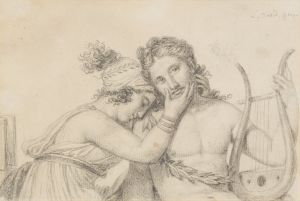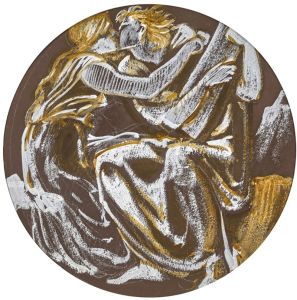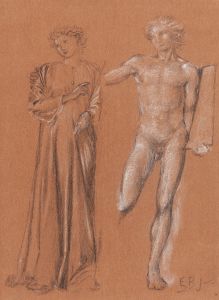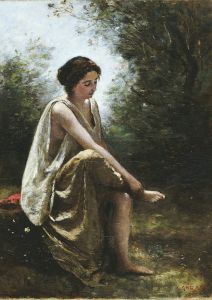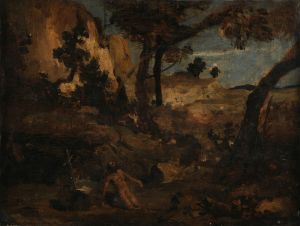
Orpheus Leading Eurydice from the Underworld
A hand-painted replica of Jean-Baptiste-Camille Corot’s masterpiece Orpheus Leading Eurydice from the Underworld, meticulously crafted by professional artists to capture the true essence of the original. Each piece is created with museum-quality canvas and rare mineral pigments, carefully painted by experienced artists with delicate brushstrokes and rich, layered colors to perfectly recreate the texture of the original artwork. Unlike machine-printed reproductions, this hand-painted version brings the painting to life, infused with the artist’s emotions and skill in every stroke. Whether for personal collection or home decoration, it instantly elevates the artistic atmosphere of any space.
Orpheus Leading Eurydice from the Underworld is an oil painting created by the French artist Jean-Baptiste-Camille Corot in 1861. This work is one of Corot's most celebrated mythological compositions and is housed in the Musée d'Orsay in Paris, France. The painting depicts a scene from the ancient Greek myth of Orpheus and Eurydice, a story that has been a recurring subject in Western art and literature.
The painting illustrates the moment when Orpheus, a legendary musician and poet, leads his wife Eurydice out of the Underworld. According to the myth, Eurydice had died from a snake bite, and Orpheus, stricken with grief, descended into the Underworld to plead for her return. His music moved Hades and Persephone, the rulers of the Underworld, who agreed to let Eurydice return to the world of the living on one condition: Orpheus must not look back at her until they had both reached the surface. In Corot's painting, the couple is shown walking through a shadowy, dreamlike landscape, with Orpheus gently guiding Eurydice by the hand.
Corot's treatment of the myth is notable for its poetic and atmospheric qualities. The composition is dominated by a soft, diffused light that creates a sense of mystery and otherworldliness. The figures of Orpheus and Eurydice are rendered with a delicate, almost ethereal quality, emphasizing the fragility of their situation. The surrounding landscape, with its muted tones and subtle details, enhances the emotional resonance of the scene. Corot's use of light and shadow, as well as his ability to convey mood through his depiction of nature, reflects his mastery of both Romantic and Realist traditions.
This painting is also significant within Corot's body of work, as it represents a departure from his more typical landscapes and portraits. While Corot is best known as a precursor to the Impressionist movement and for his plein air studies of nature, Orpheus Leading Eurydice from the Underworld demonstrates his ability to engage with classical themes and narratives. The work showcases his interest in blending mythological subject matter with his characteristic sensitivity to light and atmosphere.
The painting has been praised for its emotional depth and technical skill. It remains a key example of 19th-century French art, illustrating the enduring appeal of classical mythology as a source of inspiration for artists. Today, it continues to be admired for its timeless beauty and its ability to evoke the poignant themes of love, loss, and the fleeting nature of human existence.





